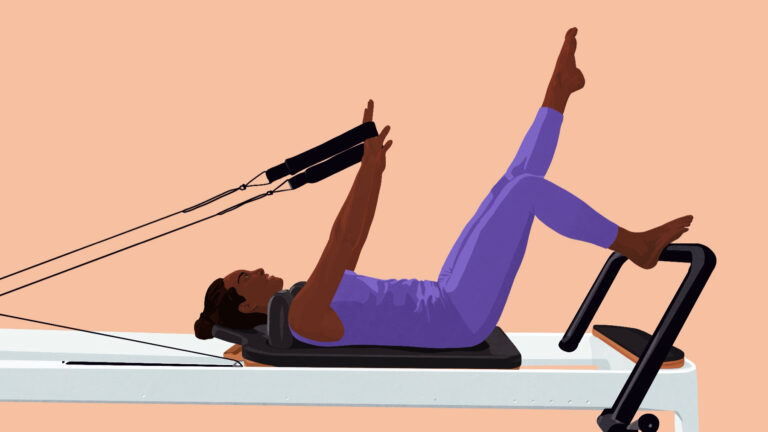A lot can change in a week. When we sent Issue No. 70, trainers and staff were diligently cleaning exercise equipment. And, despite their trepidation, members filed into their favorite classes.
Seven days later, most of the country is on lockdown. With a “stay-at-home” order in effect, gyms and studios have shuttered along with non-life-sustaining businesses. Now, the fitness industry, like the rest of the nation, is adapting in real time.
Zooming out: the response has included a rush to streaming and on-demand content, a surge across connected fitness, a growing list of layoffs, and some good news out of Middle America.
Now Streaming
There has never been more digital fitness content created or consumed. From local studios and name brands to instructors and coaches, everyone is churning out workout videos.
While some share free content to remain top of mind, others are attempting to mitigate losses by monetizing their efforts. Another group, the clubs and studios who previously implemented remote coaching, streaming content, or on-demand offerings, are on more stable ground.
On the flipside: at-home and on-demand fitness companies are seizing this moment.
- Mirror has seen a fivefold increase in exercise frequency and an “uptick” in sales.
- Tempo users are working out 35% more often than the previous six months.
- Tonal’s sales have tripled in recent weeks. Usage is the highest in company history.
- Hydrow saw sales increased 3x in recent weeks. Usage is up more than 40%.
- FightCamp usage is up 30%+ and sales were up 2.1x as of March 13.
The big picture: this crisis is amplifying concerns brick-and-mortar operators have been wrestling with in recent years. Mainly, will on-demand and connected fitness offerings poach their members?
Prior to the coronavirus-induced shutdown, the problem was present but not immediate. Now, the shift to digital could be nearing a tipping point, in what could end up being an exodus—albeit a forced one—from studios to apps and at-home equipment.
No Clear Solution
Remember, most gym and studio owners aren’t backed by billion-dollar holding companies or franchisors. They’re not tech-savvy video producers capable of spinning up a digital offering, nor can they afford to. And, although a number solutions exist (more on that in one second), there’s no one-size-fits-all option for virtual training.
My recent LinkedIn post on the topic bears that out. With nearly 100 comments, some from industry leading operators, no two replies named the same platform for creating, streaming, or monetizing digital content.
Among the more compelling concepts, the offerings break out across options for streaming live content, uploading on-demand workouts, instructor- or coach-driven programming, and licensing content that can be bundled with a gym membership.
- Streaming/on-demand: Wexer, Intelivideo, Uscreen, FORTË
- Instructor/coach-driven: Playbook, TrueCoach
- Library/bundle: PEAR Sports, Wexer, Fitness On Demand
- Music/playlists: FEED.FM, Struct Club
- MINDBODY is accelerating the release of its video-on-demand product.
More telling, though, is the number of fitness providers turning to existing social and video platforms. From Instagram and Facebook to Zoom, Vimeo, and YouTube, trainers are hacking together video + programming (Excel) + payment (PayPal or Venmo) solutions to stay in business.
Steep Competition
For gym and studio owners to have launched digital content overnight, you have to respect the hustle. But trying to keep members engaged—and paying—during a lengthy shutdown is a tremendous challenge.
First, there’s the issue of equipment. Indoor cycling, for instance, doesn’t translate without a bike. Then there are concerns related to connectivity — if you’ve ever had a Zoom meeting… well, you know. Plus, with everyone working from home, members might not want to spend even more time exercising on the same platform.
That’s to say nothing of production quality and music, two costly hurdles.
Already, videos are being pulled down for copyright infringement. Meanwhile, the biggest names in fitness, from Peloton to Barry’s and retail brands like lululemon, are cranking out high-quality content from some of the top trainers in the game.
Speaking of Peloton, let’s not forget that they’ve spent hundreds of millions of dollars on production studios, music licenses, and instructor talent to create a premium experience. So, when they heavily discount their app, making it free for 90-days, it’s hard to imagine fitness-seekers won’t defect from their local studios.
The Tipping Point
Around the web, the consensus seems to be that COVID-19 is an accelerant, fueling a shift to digital and at-home fitness. Depending on who you ask (and who you believe), once we hit this tipping point, the pendulum won’t swing back to exercising in-person.
For some, social isolation will leave them craving the community aspect of their favorite studio or gym more than ever before. Others who responded to the pandemic by purchasing a Peloton, outfitting a home gym, or downloading a fitness app might not turn back.
Then there’s the heartbreaking reality that some businesses won’t survive this shutdown. And if that’s the case, there won’t be a gym to return to.
Right now, though, there are more questions than answers. But in this moment, it feels like fitness (and life) just changed forever.
😬 Tough Times
A few weeks into mandated shutdowns, some gyms and studios have been forced to lay off significant portions of their workforce.
- [solidcore] laid off 98% of its workforce. The company had employed 137 full-time employees, 97 part-time employees, and 397 coaches. For now, thirteen employees will remain at the company on “very reduced salaries”.
- Flywheel also laid off 98% of its employees. A small team was retained to maintain business operations.
- Town Sports International-owned New York Sports Clubs and Boston Sports Clubs have laid off all their employees.
A growing list: Ragnar, Eight Sleep, Peerfit, and Heyday have also moved to cut their workforce and reduce cash burn.
Takeaway: Unfortunately, as the pandemic persists, layoffs (or worse) will continue to plague the fitness and wellness industry — alongside the broader economy.
🤜 Joining The Fight
A more positive note amid the chaos, Rogue Fitness, a manufacturer of exercise equipment, has joined the fight against COVID-19.
What’s happening: Rogue has devoted part of its operations to producing medical supplies, including “masks, gowns, [face] shields, and ventilators”.
- Rogue’s founder and owner Bill Henniger announced plans to hire 100 new employees at a minimum starting wage of $17/hour to support the efforts.
- The company started production of medical supplies and also purchased three industrial 3D printers to make ventilators.
- Rogue then halted orders for 24 hours to allow the operations team “to get caught up”.
Zooming out: As we previously reported, Rogue Fitness is the antithesis to Silicon Valley startups or newfangled wellness brands, operating out of a 600,000-square-foot headquarters in Columbus, Ohio and employing a workforce of 600+.
📰 News & Notes
- MINDBODY’s message on COVID-19.
- Investment decisions in a pandemic world.
- A petition to save the health and fitness industry.
- Arnold Schwarzenegger’s stay-at-home workout routine.
- IHRSA lobbies Congress to include fitness industry in stimulus.
- COVID-19 prompted Peloton to suspend Tread sales and delivery.
- The wellness industry can’t stop itself from capitalizing on coronavirus.
💰 Money Moves
- India-based CureFit, a vertically integrated health and wellness company, closed a $110M round led by Temasek, bringing their total funding to more than $400M. More from Fitt Insider: CureFit, the most innovative wellness company you’ve never heard of
- Ōura raised $28M for its sleep tracking wellness rings. More from Fitt Insider: The Billion Dollar Business of Sleep
- Mental health startup Lyra Health secured $75M investment. More from Fitt Insider: Startups Confronting the Mental Health Crisis
- Nature’s Fynd, a food startup producing protein from a microbe found in the geothermal springs of Yellowstone’s ancient volcano, raised $80M in Series B funding. More from Fitt Insider: A Plant-based Future
- UK-based THIS, a plant-based food startup, raised £4.7M in seed funding.
- Plant-based protein brand Your Super secured $10M in Series B funding.
- Quit Genius, a digital behavior change platform for addictions, raised $11M.
- Nutrition bar maker Core Foods secured $6M in new funding.
- Produce delivery startup Hungry Harvest closed a $7.25M Series A.
- Predictive Fitness, a startup using big data and biometrics to impact athletic and fitness performance, raised $880K.






